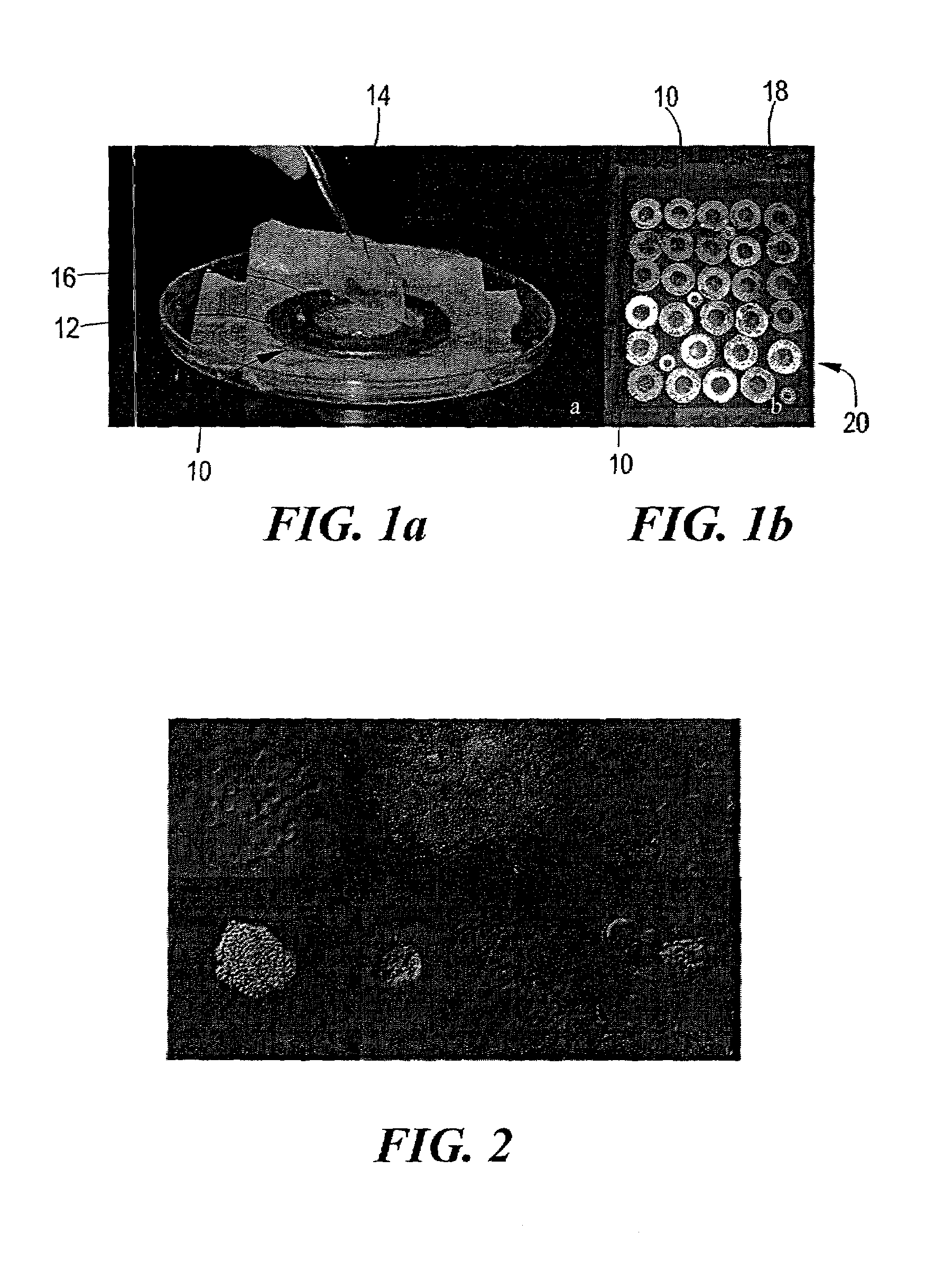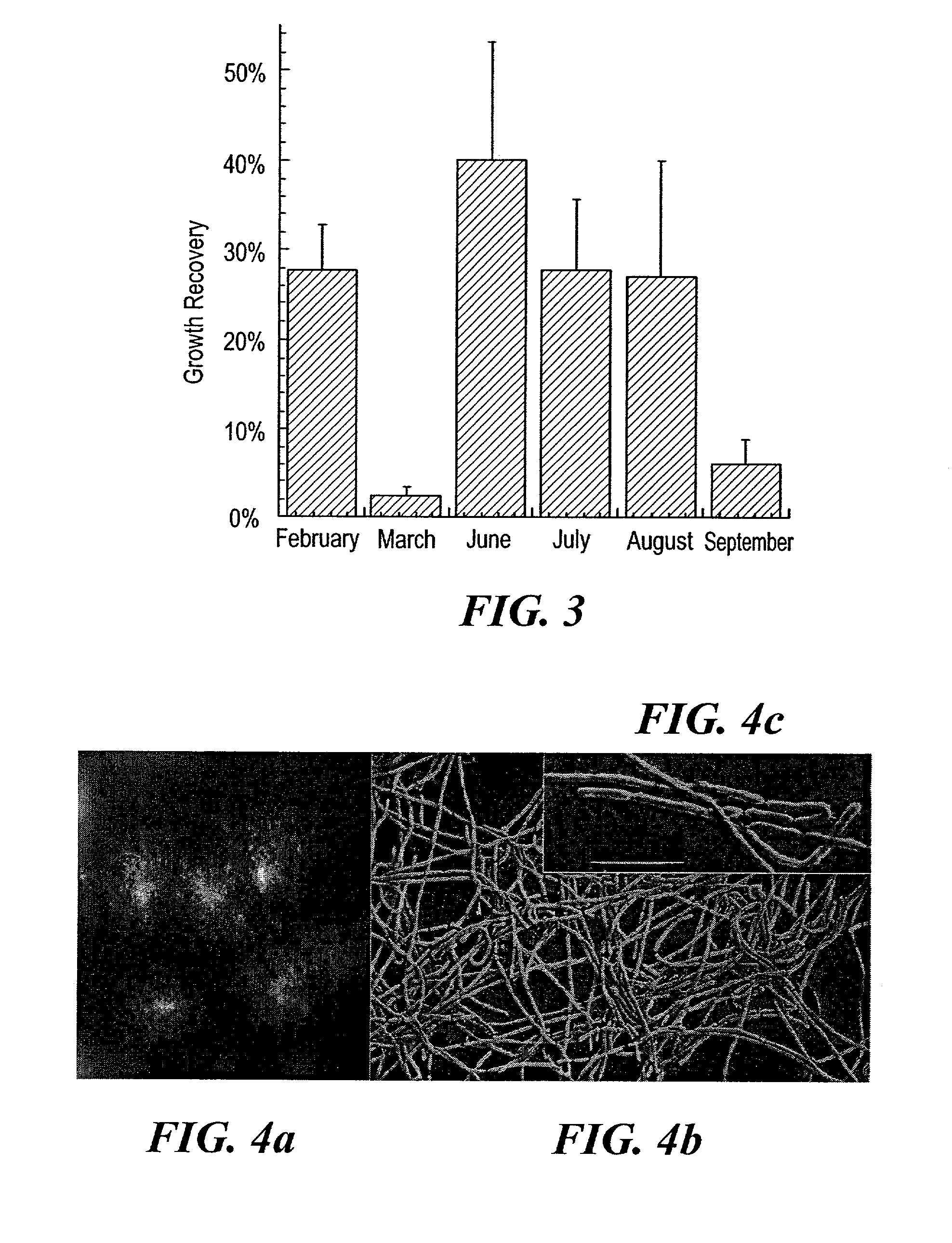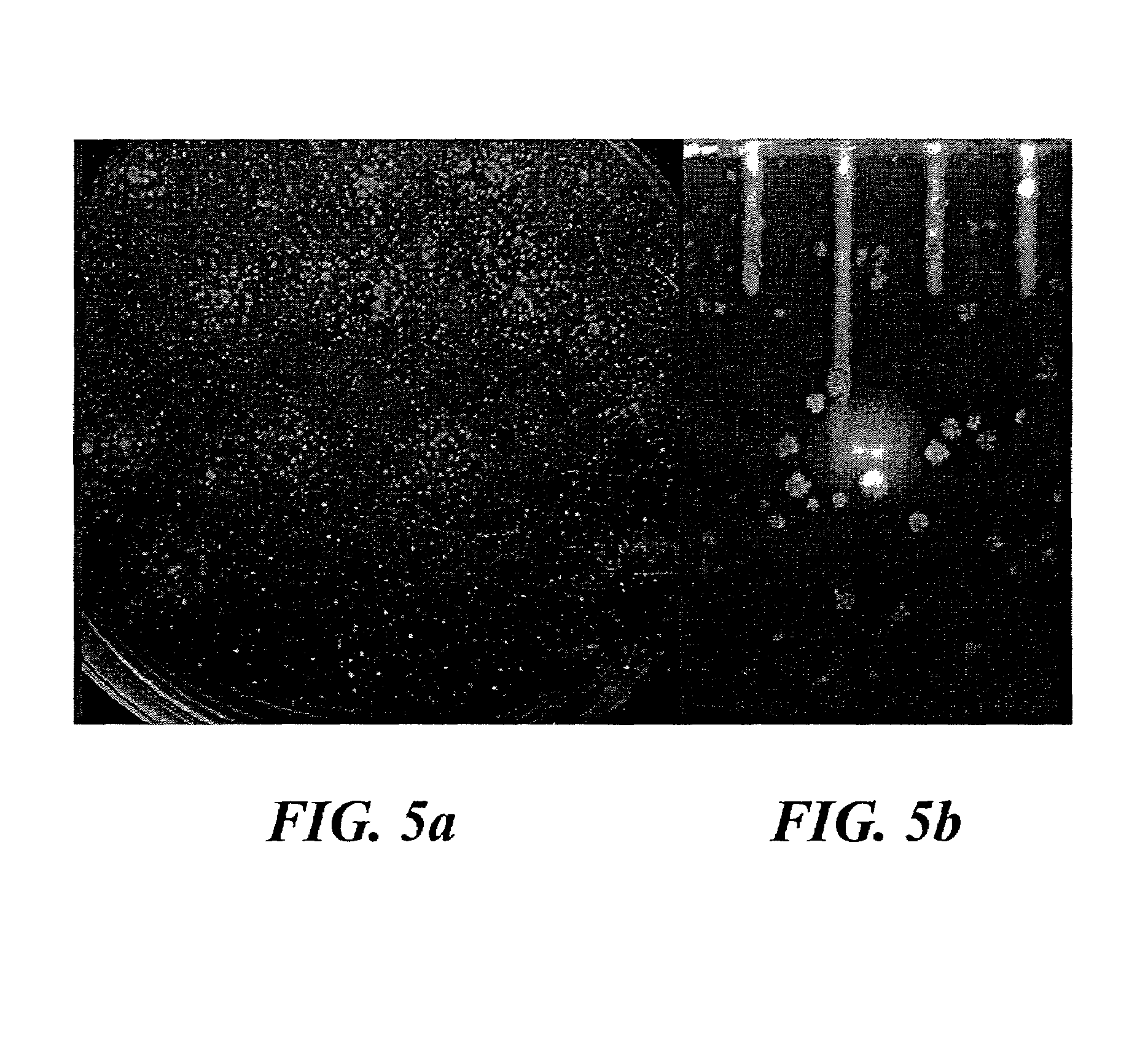Isolation and cultivation of microorganisms from natural environments and drug discovery based thereon
a technology of natural environment and cultivation method, which is applied in the field of cultivation of microorganisms from natural environment and drug discovery based thereon, can solve the problem of a large number of microorganisms from the environment resisting cultivation
- Summary
- Abstract
- Description
- Claims
- Application Information
AI Technical Summary
Benefits of technology
Problems solved by technology
Method used
Image
Examples
example 1
Identification of Previously Unknown Microorganisms According to the Method of the Invention
[0042]Intertidal marine sediment (near the Marine Science Center, Northeastern University, Nahant, Mass., U.S.A.) was used as a source of microorganisms. The upper layer of the sandy sediment harbors a rich community of microorganisms, primarily aerobic organoheterotrophs, which reach densities of over 109 cells / g20 and are mostly uncultivated21-22 In general, the microorganisms are separated from sediment particles by vortexing, then serially diluted and mixed with warm agar made with seawater, and, finally, placed in a diffusion chamber. Referring to FIG. 1a, an exemplary diffusion growth chamber (10) for in situ cultivation of environmental microorganisms according to the invention is formed by a stainless steel washer (12) (70 mm o.d., 33 mm i.d., 3 mm in thickness; Bruce Watkins Supply, Inc., Wilmington, N.C.) and two 0.03-μm pore-size polycarbonate membranes (14) (Osmonics, Inc., Westbo...
example 2
Co-Culture Requirements of Novel Isolates
[0050]We noticed that MSC1 grew well in Petri dishes that were contaminated with certain other microorganisms. One of them (MSC2) was later isolated into pure culture in the growth chambers and identified as a novel microorganism exhibiting 95% 16S rRNA gene sequence similarity (GenBank accession # AY062177) to Arcobacter nitrofigilis (=Campylobacter nitrofigilis; Class Epsilon-proteobacteria, Phylum Proteobacteria13). Arcobacter nitrofigilis are motile, spiral curved rod-shaped bacteria, capable of nitrogen fixation and nitrate respiration, and incapable of metabolizing carbohydrates27. MSC2 are also curved rod-shaped bacteria and are observed to be motile. The genus Arcobacter is commonly found in marine sediments21, and related 16S rRNA sequences have recently been recovered from this environment22.
[0051]While growth of MSC1 and MSC2 could be maintained easily in separate cultures in the diffusion chamber environment, growth of these bacte...
PUM
| Property | Measurement | Unit |
|---|---|---|
| pore size | aaaaa | aaaaa |
| thickness | aaaaa | aaaaa |
| thickness | aaaaa | aaaaa |
Abstract
Description
Claims
Application Information
 Login to View More
Login to View More - R&D
- Intellectual Property
- Life Sciences
- Materials
- Tech Scout
- Unparalleled Data Quality
- Higher Quality Content
- 60% Fewer Hallucinations
Browse by: Latest US Patents, China's latest patents, Technical Efficacy Thesaurus, Application Domain, Technology Topic, Popular Technical Reports.
© 2025 PatSnap. All rights reserved.Legal|Privacy policy|Modern Slavery Act Transparency Statement|Sitemap|About US| Contact US: help@patsnap.com



